Medieval Knight Suit Of Armor Costume Full Body Armor Wearable
$649.99
- Material: Solid steel
- Finish: As shown in the pictures
- Adult size
- Size: 6 feet
- Include Shield & Sword
-
Look at photos for the actual picture of the product.
-
Full Body Suit as shown in the pictures
-
The sword & shield are also included as everything is shown in the pictures
-
Handcrafted
Medieval Knight Suit of Armor| Full Body Armor Wearable
medieval knight suit of armor A full-body suit of armor, also known as a “harness,” was a type of armor worn by knights and other soldiers during the Middle Ages. It was designed to protect the wearer’s entire body from head to toe and consisted of several different pieces that were attached together to form a complete suit. The armor was typically made of metal, such as iron or steel, and was either riveted or welded together. It included a helmet to protect the head, a breastplate to protect the chest and torso, gauntlets to protect the hands, and tassets to protect the legs. Some suits of armor also had a visor or grill to protect the face, and a shield to provide additional protection. Suits of armor were heavy and cumbersome to wear, but they provided excellent protection on the battlefield.
Specifications of medieval knight suit of armor:
medieval knight suit of armor A medieval knight’s suit of armor was designed to protect the wearer from the weapons and tactics of their opponents on the battlefield. It was made of metal, usually iron or steel, and consisted of several different pieces that were attached together to form a complete suit. The specific components and features of a suit of armor varied depending on the time period, location, and personal preferences of the knight who wore it, but some common features and specifications of medieval knight suit of armor include:
- Helmet: A metal helmet was worn to protect the head and face. It typically had a visor or grill to allow the knight to see and breathe and may have had a crest or plume for decorative purposes.
- Breastplate: The breastplate was a piece of armor that covered the chest and torso. It was typically made of a single piece of metal and was designed to protect the knight’s vital organs from blows to the front of the body.
- Gauntlets: Gauntlets were gloves made of metal that protected the hands and wrists. They were often reinforced with additional armor plates to protect the back of the hand and fingers.
- Tassets: Tassets were armor plates that covered the front and sides of the thighs. They were attached to the breastplate and provided additional protection for the lower body.
- Shield: A shield was a portable piece of armor that a knight could use to deflect blows and protect himself from attacks. It was typically made of wood or metal and was often adorned with the knight’s colors or insignia.
- Greaves: Greaves were armor plates that covered the front and sides of the lower legs. They were worn to protect the shins and ankles from blows and arrows.
- Spaulders: Spaulders were armor plates that covered the shoulders and upper arms. They were often worn in conjunction with a breastplate and other pieces of armor to provide additional protection for the upper body.
- This is all included with the medieval knight suit of armor
History of medieval knight suit of armor:
Medieval knight suit of armor history of medieval knightly armor can be traced back to ancient civilizations, where soldiers wore armor made of materials such as leather, bronze, and iron to protect themselves in battle. However, it was during the Middle Ages, particularly the 11th and 12th centuries, that armor reached its height of development and became an integral part of the knightly culture.
During this time, knights wore full-body suits of armor that were designed to protect them from the weapons of their opponents, such as swords, lances, and arrows. These suits were made of metal, usually iron or steel, and were comprised of several different pieces that were attached together to form a complete suit. The armor included a helmet to protect the head, a breastplate to protect the chest and torso, gauntlets to protect the hands, and tassets to protect the legs. Some suits of armor also had a visor or grill to protect the face, and a shield to provide additional protection.
Suits of armor were expensive and time-consuming to manufacture and were only worn by the wealthy and powerful. As a result, they became symbols of status and wealth and were often adorned with intricate designs and symbols. The armor was also an important part of the knight’s identity, as it often bore the colors and insignia of the knight’s lord or country.
Over time, the design and construction of suits of armor evolved to meet the changing needs of knights and the development of new weapons and tactics. However, the basic principles of medieval armor remained largely unchanged until the introduction of gunpowder and firearms, which made armor less effective and ultimately led to its decline in the 16th century.
Components of a medieval knight suit of armor covering the entire body
Medieval knight suit of armor is A full-body suit of armor, also known as a “harness,” designed to protect the entire body of a medieval knight from head to toe. It consisted of several different pieces that were attached together to form a complete suit. The specific components of a suit of armor varied depending on the time period, location, and personal preferences of the knight who wore it, but some common pieces covered by medieval knight suit of armor are the entire body included:
- Helmet: A metal helmet was worn to protect the head and face. It typically had a visor or grill to allow the knight to see and breathe and may have had a crest or plume for decorative purposes.
- Breastplate: The breastplate was a piece of armor that covered the chest and torso. It was typically made of a single piece of metal and was designed to protect the knight’s vital organs from blows to the front of the body.
- Gauntlets: Gauntlets were gloves made of metal that protected the hands and wrists. They were often reinforced with additional armor plates to protect the back of the hand and fingers.
- Tassets: Tassets were armor plates that covered the front and sides of the thighs. They were attached to the breastplate and provided additional protection for the lower body.
- Greaves: Greaves were armor plates that covered the front and sides of the lower legs. They were worn to protect the shins and ankles from blows and arrows.
- Spaulders: Spaulders were armor plates that covered the shoulders and upper arms. They were often worn in conjunction with a breastplate and other pieces of armor to provide additional protection for the upper body.
- Cuirass: A cuirass was a piece of armor that covered the entire torso, including the chest, back, and sides. It was typically made of metal and was worn over the breastplate and tassets.
- Pauldron: A pauldron was a piece of armor that covered the shoulder and upper arm. It was often worn in conjunction with a spaulder to provide additional protection for the upper body.
- Vambrace: A vambrace was a piece of armor that covered the lower arm and wrist. It was worn in conjunction with gauntlets to protect the hands and wrists.
- Gorget: A gorget was a piece of armor that covered the neck and upper chest. It was typically worn in conjunction with a breastplate and other pieces of armor to provide additional protection for the upper body.
If you want to buy other relative products visit our shop page SinghBros Mart Shop
You can follow us on
Facebook | Twiter | Instagram | Linkedin | Pinterest | Tumblr
By: Singhbros Mart
Only logged in customers who have purchased this product may leave a review.

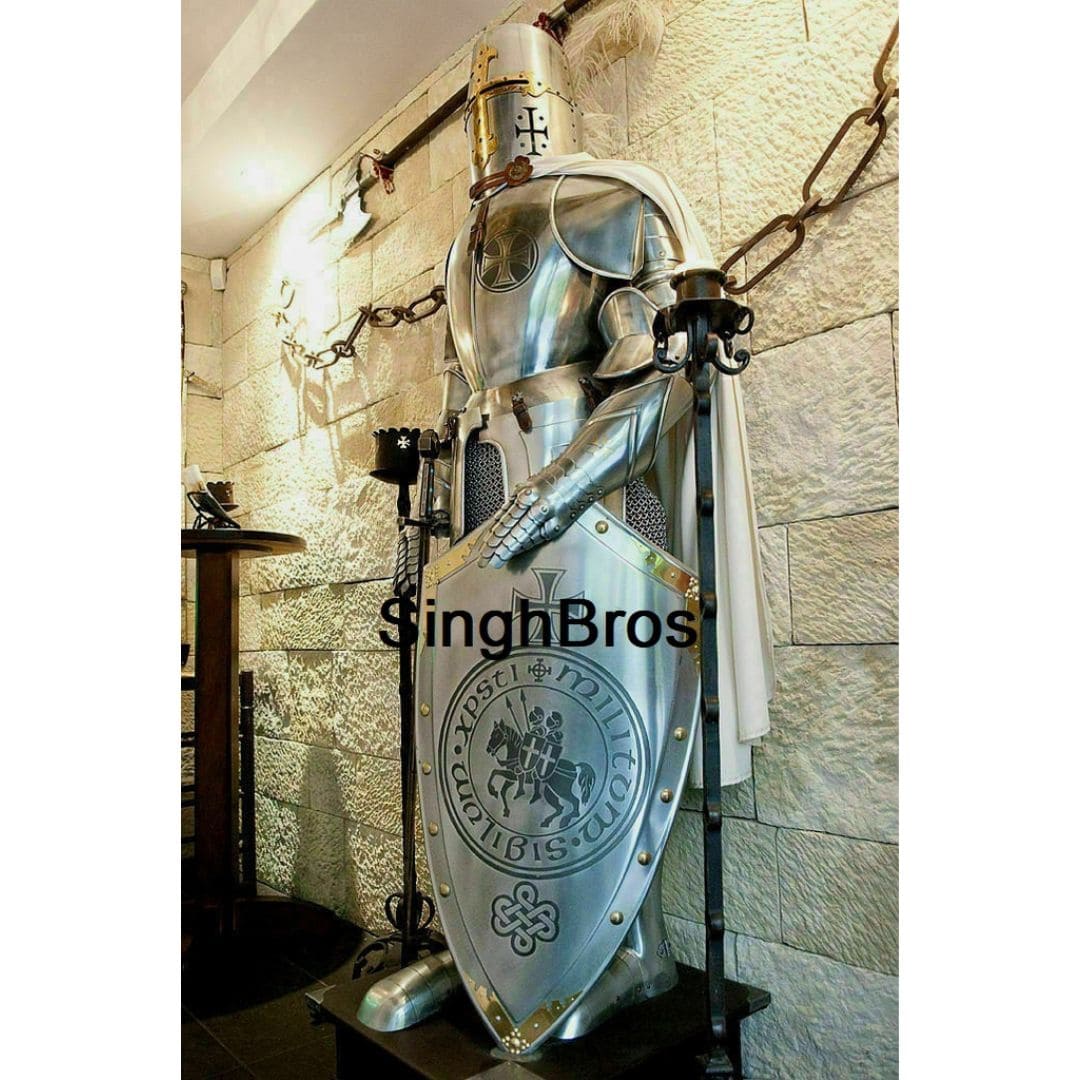

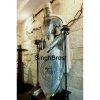
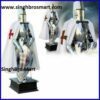
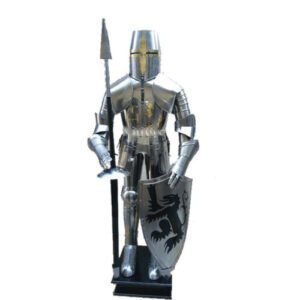
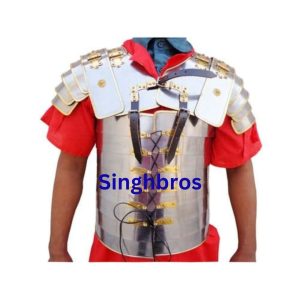
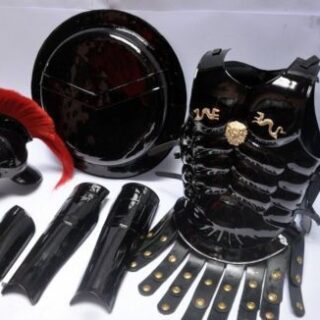
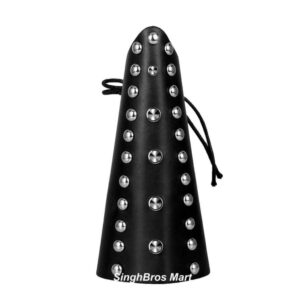
Reviews
There are no reviews yet.